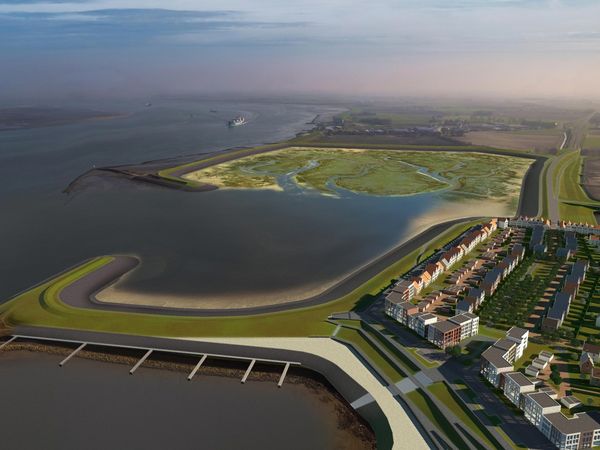| PP Vegetation and sediment development | |
|---|---|
| Context | PP Ontpoldering Perkpolder |
| Decompositie type | IOR |

The time it takes before vegetation will develop is a key question in many depoldering and managed realignment projects. It is often clear that in tidal area’s with sufficiently high sediment concentrations in the water column, marshes will eventually develop (Balke et al. 2016). However, for nature goals and recreational activities in the area, it is desirable to be able to predict if this will happen on the short term (< 5 years), or if this will only be the case on the long term (> 50 year). Being able to predict the rate of development is desirable to come up with a cost effective design when a specific type of habitat is desired either from nature management perspective, e.g. in case for compensation measures or when public support depends on the type of nature that will develop. Answering this question requires obtaining an understanding of the processes that control (i.e., enable and hamper) the initial establishment and subsequent lateral expansion of pioneer species.
It is well known that the initial vegetation development depends on a number of abiotic and biotic factors (Friess et al. 2011). For example, inundation period, and thereby the elevation, is a major factor controlling seedling survival (Balke et al. 2016) (Bouma et al. 2016). Recently, it was shown that short-term mixing of the sediment due to hydrodynamics (e.g. waves) is another important factor that may limit seedling survival to the higher elevations (Bouma et al. 2016). Much less is however known about how abiotic and biotic ‘sediment’ properties like compaction, drainage, sediment chemistry and bioturbation may affect seedling establishment and lateral expansion. The characteristics and development of the accreting sediment may expected to be an important factor for the vegetation establishment. As schematized in figure 2 differences in drainage and sediment compaction may be the driver of 2 alternative stable states, determining if seedlings will or will not establish (figure 2). From the sediment development following the construction of groins by Waarde, it may be expected that ‘ontpoldering’ areas will experience high rates of sediment accretion, but with low rates of soil compaction.

Research questions
The Perkpolder study aims to develop generic rules on the factors that control the sediment development and the vegetation development (i.e., including both establishment and lateral expansion), by answering the following questions:
- How do abiotic and biotic sediment properties affect seedling survival and lateral expansion?
- What is the effect of surface elevation, bulk-density of the sediment, and drainage?
- What is the effect of the soil chemistry?
- What is the influence of bioturbation?
- How do these abiotic and biotic sediment properties (that affect vegetation establishment) change over time, and space in Perkpolder?
- How do these factors developed through time?
- Are there special patterns in the relation with distance to channel and dyke?
- What is the role of seed availability and seed dispersal for the vegetation development?
- Is the inflow of seeds sufficient to start the colonization process?
- Is there enough seed retention and sedimentation to make colonization possible in all part of Perkpolder tidal basin?
- What is the pattern of colonisation and lateral expansion by pioneer species, along the elevational gradient?
- Is it possible to use the Windows of Opportunity theory to predict which parts of the area will be covered with vegetation?
- What is the relative importance of seed dispersal versus clonal dispersal for the colonization of the area?
Data and methods
The data and the methods that have been used for the evaluation of the development of the vegetation and sediment are all described in the Perkpolder progress reports:
De View-Navigation (VN) pagina's.
De links naar andere pagina's.
| Produceert | |
|---|---|
| Consumeeert | |
| Onderdeel van | PP Monitoring the development of the low dynamic intertidal area at Perkpolder |
| Instantie van | |
| Betreft |
De pagina's die linken naar deze pagina.
| Bestaat uit | Type |
|---|---|
| PP Sediment properties | Condition |
| PP Seed availability and dispersal | Condition |
| PP Seedling survival and lateral expansion | Activity |
| PP Vegetation development | Activity |
Naar dit element wordt niet geconnecteerd.






